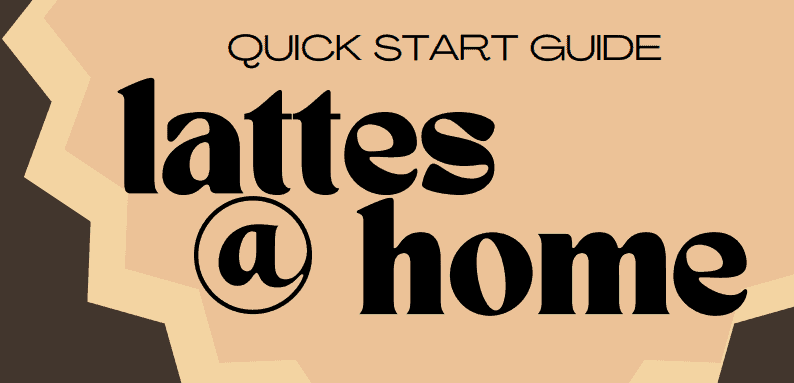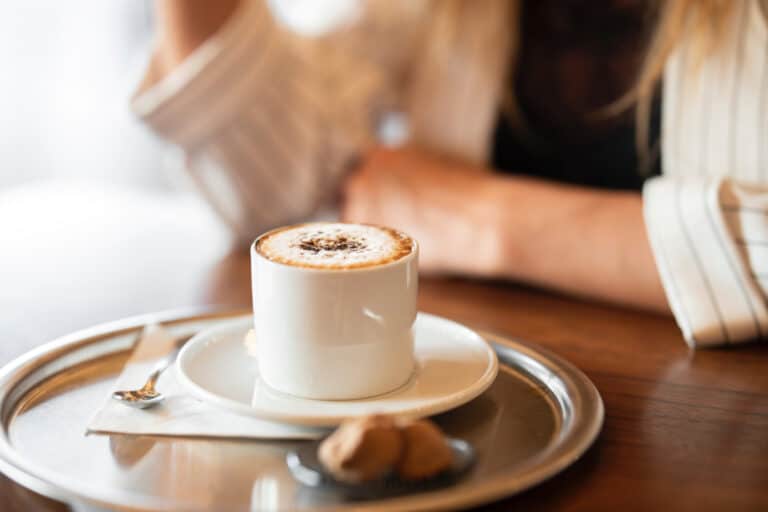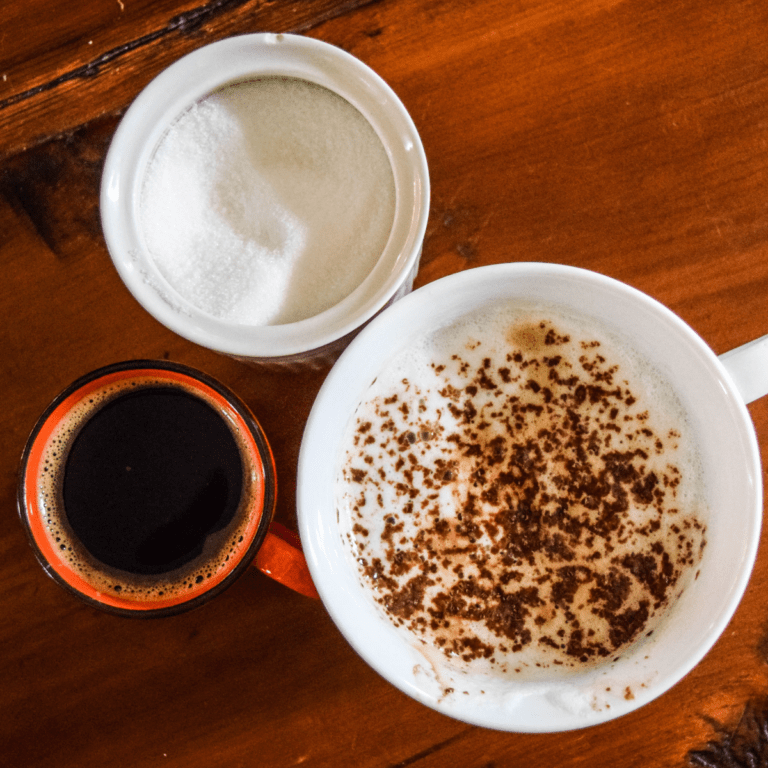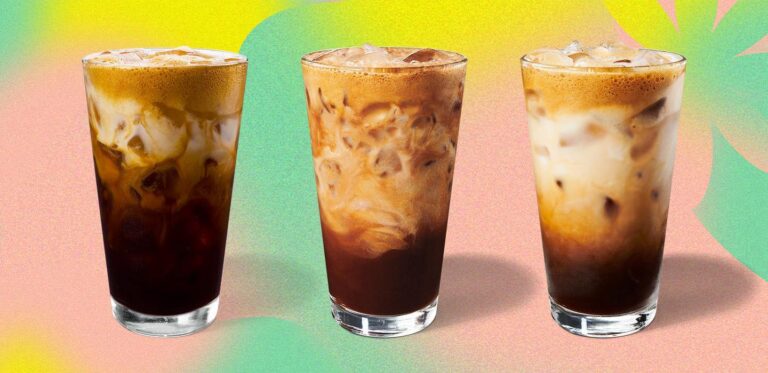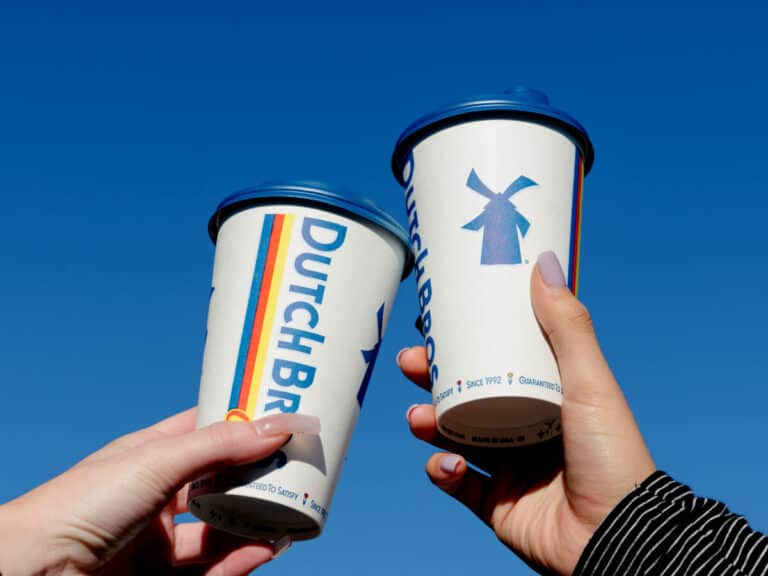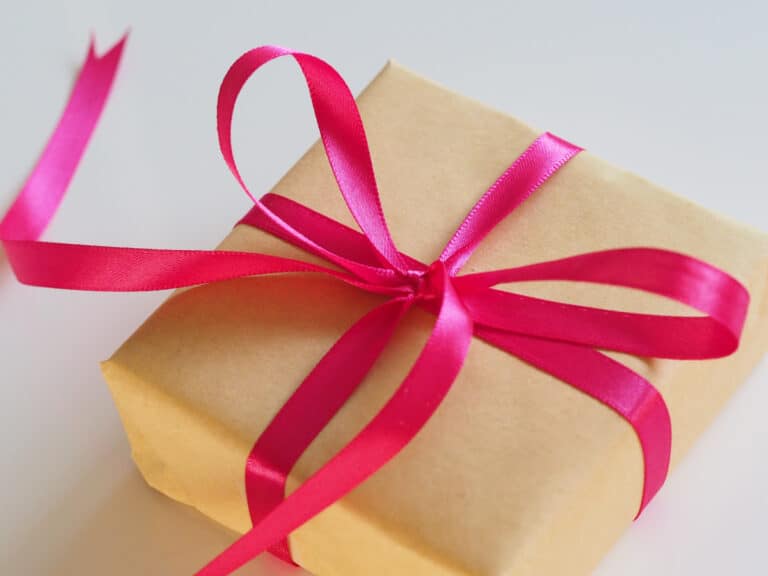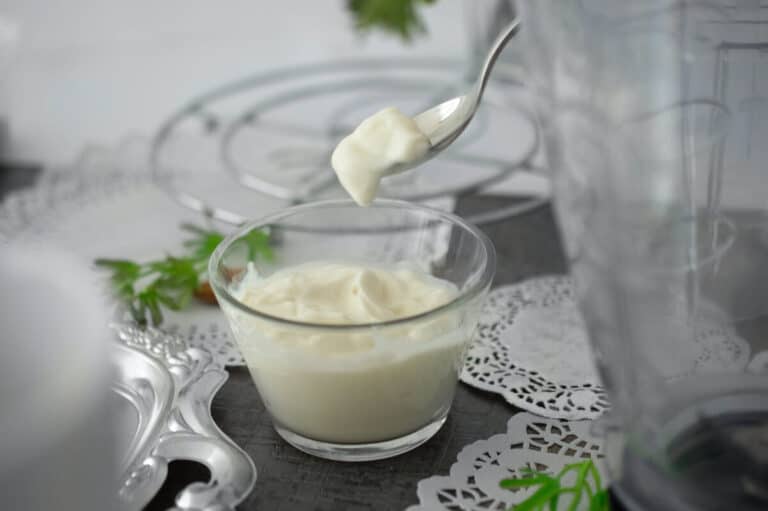All your espresso questions answered!
Espresso is a term often heard when talking about coffee, but it’s not always clear what exactly makes espresso, espresso. Here’s the brief answer: espresso is a way of brewing coffee where intense pressure quickly pushes the water over the coffee grounds. What results is a sweet, intense coffee product.
(Related: 23+ Delicious Coffee Overnight Oats Recipes)
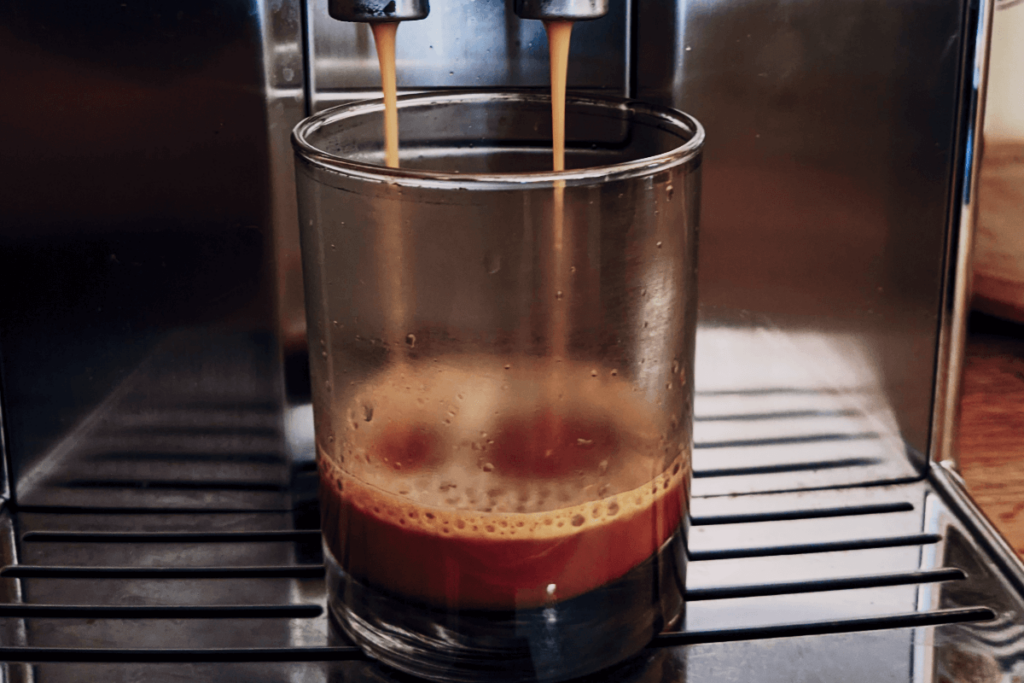
Espresso vs. coffee: What’s the difference?
Espresso is coffee, but not all coffee is espresso. Espresso is brewed differently than what most people in the United States mean with they say “coffee.” What most people have in mind for coffee is a beverage produced by a drip coffee machine or a French press resulting in a mug full of coffee. But that’s simply one way to use a coffee bean to produce a drink, and making espresso is another.
How do I pronounce espresso?
The word espresso is pronounced [e-spres-oh]. There is no “x” in the spelling or in the way it is pronounced.
Are the bags of coffee beans labeled “espresso” at the store actually espresso?
No, the only way to create actual espresso is through a pressurized brewing process. Beans labeled “espresso” are a roast that is made to do well and taste great if used for making espresso. You can use these coffee beans to also make any other type of coffee such as in a French press or drip coffee.
Does espresso have more caffeine than drip coffee?
According to the USDA, one shot (which equals one ounce) of espresso has 64mg of caffeine. The USDA says that one eight-ounce cup of coffee has 95mg of caffeine.
In an ounce-to-ounce comparison, espresso is much stronger than drip coffee.
But, one does not serve espresso and drip coffee in the same way. Three shots of espresso is roughly equivalent to the amount of caffeine in a medium (16 oz) cup of drip coffee.
Most coffee shops, such as Starbucks, serve two shots of espresso in a 16 oz beverage. If you want to match the amount of caffeine in the equivalent size of drip coffee, just as for another shot!
What does a double shot mean?
Espresso is measured by a shot, which is one ounce of liquid. A double shot means two shots or two ounces of espresso. Two shots of espresso are also often called a doppio.
Starbucks has a line of espresso products it produces under the brand name “Doubleshot.” These don’t necessarily contain two shots of espresso.
Can you drink espresso the same as coffee?
Espresso is measured and served by the ounce. You can drink it by itself but you won’t be filling up a large mug full of espresso.
If drinking espresso straight, a doppio is the most common drink, which is two shots (two ounces) of espresso. You then pour the espresso into a small cup also known as a demitasse and then serve.
How do you order an espresso?
If you want to drink just espresso, the most common way for one to order it is to ask for a “doppio.” You will be served two shots (two ounces) of espresso in a small cup.
Two other common drinks are a doppio macchiato and a doppio con panna.
A doppio macchiato is two shots of espresso served with a dollop (or mark) of foamed milk. (Don’t confuse this drink with a similarly named drink, the caramel macchiato, which is more akin to a latte.)
A Doppio con panna is two shots of espresso served with a dollop of whipped cream.
How is espresso used in coffee shops?
Espresso is the base for many drinks such as lattes, cappuccinos, and americanos. Espresso provides a way to quickly make on-demand coffee beverages.
Can you use regular coffee beans to make espresso?
Yes, any coffee beans can be used to make espresso but ones specially formulated for espresso often work and taste better.
Can I get it decaf?
Yes, since you can use any coffee beans to make espresso, you can also use decaffeinated coffee beans. If you want decaf espresso at a coffee shop, just ask! Most places have it as an option.
What does espresso taste like?
Espresso has a slightly bitter, sweet, and full taste, especially compared to drip coffee. It will taste different based on the type of beans used and the exact way the espresso is extracted. Hints of chocolate, caramel or fruit are often present.
Are espresso beans edible?
Yes, espresso beans are the same as any other coffee bean and can be eaten by themselves. Though, the taste of a bean by itself is often bitter and grainy. That’s why you’ll often find “espresso beans” sold covered in delicious chocolate.
Keep in mind that these beans aren’t technically espresso at all, but they are often roasted in a way that is ideal for espresso.
And yes, you do still get caffeine from eating a coffee bean. A whole ounce of chocolate-covered espresso beans has 227 mg of caffeine, which would be just a bit more caffeine than a 16 oz cup of brewed coffee.
When was espresso invented?
The first espresso-type machine was invented in 1884 by Angelo Moriondo. In 1903 Desiderio Pavoni bought the patent to the espresso machine and started the La Pavoni company which then started selling espresso machines.
Espresso increasingly became popular as the machines improved, and it created a way for coffee shops to serve coffee on-demand very quickly.
In the United States, through the 1980s, and then the 1990s, espresso at coffee shops rose astronomically in popularity. Starbucks is largely credited with making coffee culture and espresso mainstream to the masses, although several chains and small coffee shops also gained traction during that time.
Do I actually need an espresso machine to make espresso?
Yes, you need some sort of machine to help create the type of pressure that is needed to make coffee beans into espresso.
The core of how espresso is made is by quickly pushing water through compacted, finely ground coffee beans at approximately nine bars of pressure. This process is not possible to achieve without some help from a machine. Using a Moka Pot or various home equipment can create something similar.
What are the parts of an espresso shot?
The three parts of espresso are the crema, body, and heart. The crema is the top layer that appears a lighter color than the rest and tastes the sweetest. The body is the middle layer and the largest part. It has a darker brown color and contains much of the richness you find in espresso. The last part is the heart, and this is a deep brown color and contains acidic flavors.
Get my free Quick Start Guide: Lattes at Home for signing up for my email list!
